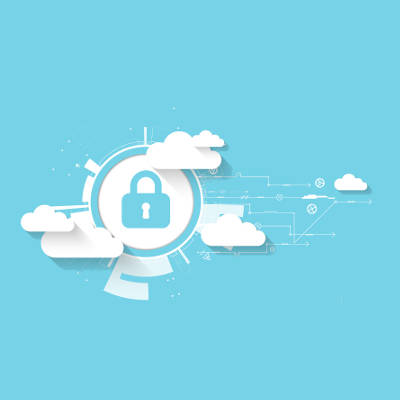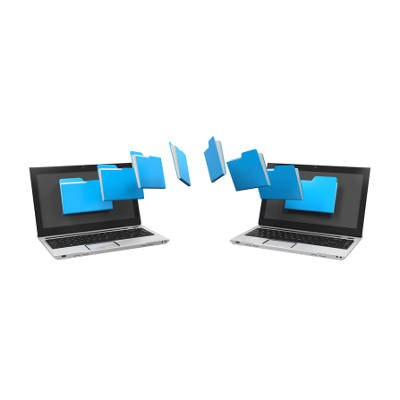Have You Implemented These Security Best Practices?

If your business hasn’t put protections in place for your technology infrastructure, that needs to be moved to the top of your to-do list, yesterday. It isn’t as though the increasing number of threats are going to avoid you until your network is prepared to deflect them. Therefore, you need to take action now. To help, we’ll review some of the most important security considerations to make for your organization.
Get the Best of Both Worlds with a Managed Private Cloud

The cloud is a great asset for any business, whether you’re a major enterprise or a small family-owned operation. However, there are different types of hosted solutions, and they all offer various benefits and hindrances for your business. What’s the best type of cloud for your organization, and how can you protect the security and integrity of the data stored in it?
There are generally three types of clouds: public, private, and hybrid. Each of these has their own distinct benefits, and depending on the type of business you run, you might be more inclined to select one over the other.
Public
There are many reasons for a small business to select a public cloud as its preferred solution. For one, it removes the responsibility of management and maintenance from your company’s shoulders, allowing you to focus on operations. It has gotten to the point where public cloud solutions are both affordable and quite secure (for the most part), which means that even small businesses with limited budgets can take advantage of the basic aspects of a public cloud-hosted solution.
The main issue that businesses have with public clouds is that they don’t have as much control over their data–or the management of it. Basically, the public cloud is secured and maintained by those hosting it, which limits the ability of companies to implement secondary or more advanced security features. Consider whether your organization wants and needs this additional customization and security before investing in a public cloud.
Private
A private cloud, however, is generally hosted in-house on your company’s hardware, which enhances the security of your cloud system. As long as you have the computing resources, you can customize and control your cloud solution as you see fit. This is the preferred method of cloud management for organizations that have in-house teams dedicated to maintaining advanced computing infrastructures.
Of course, for companies that don’t have internal IT departments, the lack of regular maintenance and management can lead to wasted resources and crippling disasters. If you don’t take care of your technology, it can come back to bite you when you need access to it most. Thankfully, there is a middle-ground solution that works for both small businesses and larger enterprises: a managed private cloud.
Our Managed Private Cloud Solution
Small businesses can take advantage of a private cloud solution without the need to maintain the server hardware or other technology required, and it’s all thanks to modern managed IT solutions. Catalyst Technology Group can help your company implement an on-premise private cloud solution that we can remotely monitor and maintain. This keeps you more focused on daily operations and less on what could potentially go wrong. Since you have talented technology professionals working on your systems, you can keep operations moving forward relatively worry-free. Of course, if any issues do crop up, we will tend to them as needed.
If you’d rather your office didn’t have to worry about an in-house infrastructure, we can help you with that as well. We can partition off a portion of our in-house infrastructure to host your managed private cloud solution. Or for organizations that want the security of a private cloud with the cost reduction that often comes with a public cloud, we can set up a hybrid cloud interface. This will enable you to both manage and maintain the core computing construct of your business, while taking advantage of offsite resources for less-important parts of your computing infrastructure. All you will need is access to the Internet, and we’ll take care of the rest.
To learn more about hosted private cloud solutions from Catalyst Technology Group, reach out to us at (317) 705-0333.
Tip of the Week: Why You Should Reconsider Your Best Practices

The term “best practice” has been used by businesses for years to describe the optimal way of performing a particular task. However, before fully adopting them into business operations, it is important for these practices to be examined and deemed to be beneficial to an individual company’s circumstances. If they are not, a company risks much by adopting a misplaced best practice.
The major problem is that “best practices,” while useful if applied properly, is a term that has largely become a buzzword for businesses to use in their communications. This is dangerous, as there is a lot put at stake based on the term “best practice” alone. Therefore, it is crucial that so-called best practices are reviewed and examined before a business puts strategies based on these practices into place.
This was the argument made by Professor Freek Vermeulen in his recent book, Breaking Bad Habits: Defy Industry Norms and Reinvigorate Your Business. An interview with the Harvard Business Review allowed him to discuss the phenomenon further.
To provide an example of how best practices may not always be of a business’ best interest to follow, Vermeulen discussed a South African bank called Capitec and how they relied on reverse benchmarking to identify how to become an outlier in their industry.
The practice of reverse benchmarking can be summed up as the process of examining how one’s industry typically operates in order to identity weak spots in accepted practices and improve internal business operations. This can often lead to the abandonment of what is considered the status quo, if not heavily modifying it.
Capitec’s examinations revealed that other banks in South Africa had a tendency to close at four o’clock in the afternoon. To abandon this status quo, industry-standard practice, Capitec not only extended their hours to enable those who worked during the day to see to their banking needs once their work day was over, they even implemented Saturday hours in many of their branches. As a result, Capitec has since carved out a healthy market share for themselves.
This account is just one example that shows how what is standard practice might not be what is best for the business following it. However, many businesses give some push back when directly asked why they follow the practices they follow. These businesses often will respond with some statement that essentially says “this is what is comfortable” or “this is how it has always been done.” These answers are a good sign that, according to Vermeulen, an organization needs to run a self-audit to determine if they are enacting practices because they benefit the organization, or if they are simply resisting change.
Furthermore, there is the risk inherent in assuming that something that made a business successful is automatically a best practice. As Vermeulen mentioned in his interview, many companies who have reached the top may have simply been lucky as they enacted risk-laden strategies, and most of the companies who tried similar strategies have long since failed and been forgotten.
Of course, changing established practices and patterns is not easy for businesses to do. Vermeulen notes this, stating that many companies will hold out until they have no choice but to make a change. This is usually done at the point where their profits and productivity take a hit. However, waiting until this point often makes change more difficult for these companies. According to Vermeulen, the key to avoiding unnecessary difficulty is simple: “Be proactive.”
By taking the opportunity to audit your business practices before your company is stuck in a life or death situation, you can more clearly see where your company is weakest. Better yet, you will be able to remedy these weaknesses before your company is at risk.
Catalyst Technology Group can help you evaluate your IT solutions to ensure that they are not contributing to any weaknesses that your company may suffer from. Call us at (317) 705-0333 for more information.
Best Practices for Data Backup and Disaster Recovery

Have you considered the process in which your organization takes data backups and restores them following an emergency? The value of data backup and fast recovery can’t be ignored. Unless you take proper precautions, you could potentially face a situation that threatens the very existence of your business.
To emphasize the importance disaster recovery, consider this example. If your office were to catch fire due to an electrical problem, your legacy could erupt in flames alongside it. Even if you evacuate the building and save your employees, your technology will suffer and burn with the building. Some networking components might survive, but you’ll be lucky if anything can be salvaged from an event like this. This is why every business needs a data backup system in place.
Natural disasters, like floods, hurricanes, and thunderstorms can all cause problems for you as well. Therefore, you need to take care with how you manage your technology and your data. Even the slightest mistake could lead to large amounts of data loss. Therefore, the question of whether you will suffer from some sort of disaster isn’t if it will happen, but when it will happen. You need to take measures now to avoid suffering from disasters in the future.
Many organizations that have considered data backup and disaster recovery may not have the most optimal solutions implemented. If anything, they will have magnetic tape backup, which has long been considered the industry standard. Unfortunately, the many flaws prevalent in tape backup make it unappealing for SMBs. Since they are so resource-intensive, they must be performed after hours, and only one backup can be taken during the workday. This means that you could lose up to 24 hours worth of data in the event of a disaster–not exactly the ideal way to manage disaster recovery.
Plus, since some organizations will keep their tape backups located on-site or on their in-house infrastructure for convenience, a fire could simply destroy them along with the rest of your assets. A hacking attack could also target any digital backup files stored on your infrastructure, placing them at risk of corruption or theft. Naturally, the best way to handle data backup storage is to store them offsite, but this can complicate the actual disaster recovery process. What is the ideal way to store data while also allowing for great recovery time?
One way to solve these issues is to reach out to Catalyst Technology Group and ask us about our cloud-based backup and disaster recovery (BDR) solution. Since BDR takes smaller backups as often as every 15 minutes, your data loss is significantly reduced, if not mitigated completely. BDR only takes backups of files that have changed since the last time a backup was taken, ensuring redundancy without causing trouble for operations. The possibility of user error is also eliminated, as the backups happen automatically rather than manually. Your data will then be sent to a secure offsite data center for storage until the day you will inevitably need it. The data is then recovered via an Internet connection directly to the BDR device until you’ve found a replacement server unit to fulfill the role. It’s just one way that enterprise-level technology can help your SMB thrive.
To learn more about data backup and recovery, reach out to us at (317) 705-0333.
Keep Your Best Employee From Becoming Your Worst Problem With Data Management

Chances are that you, like most business owners, have assembled your staff very carefully, looking for people who are the best-in-class, willing to work their hardest for the good of the company. However, this staff will be made up of humans, and will therefore make mistakes. As such, you need to make sure that your data is managed in a way that keeps it safe.
Are you confident that you know where your company’s data is currently stored?
Unfortunately, if you are relying on your eager, diligent staff to allow you to answer “yes” to that question, then you may be answering incorrectly for the right reasons.
The thing about diligent employees is that, well, they’re diligent. They want to get the task at hand done to the best of their ability and as quickly as possible–and if that means they have to work from home, then that’s what they’re going to want to do. Which wouldn’t be a problem, if their home networks were nearly as secure as the ones you have in place at your business.
What’s to be done? You don’t want to discourage your more diligent employees, but you also want to make sure your data is safe.
The easy answer is to meet employees like these halfway. Give them access to a Virtual Private Network to help maximize their security as they access your data remotely. Ask them to have their personal devices checked by IT before they use them to access the network. Ask them if they’re willing to allow IT to remotely wipe their personal device if it should be lost or compromised as a precaution, if they were to be able to use it for work. An established Bring Your Own Device policy will make enforcing this requirement a little easier.
Of course, this does not mean that you should give all employees carte blanche access to all of your data. Network access control solutions are an effective way to restrict your employees from accessing data that is above their pay grade, either intentionally or by accident. Requiring authentication has become the norm in most of society, and so your loyal employees are unlikely to have a problem with it in the workplace. Passwords, PIN access, and other identification factors will prove useful in keeping employees where they are supposed to be, and able to access what they need for their job requirements.
The reason that it is so important to allow your employees to work as they wish is because it will allow them to be productive, without resorting to their own methods outside of company control, which are far less secure than what you have implemented.
For help implementing these features into your IT infrastructure, make sure you give Catalyst Technology Group a call. We have the solutions you need to safely allow your enthusiastic employees to work the way they work best. Give us a call at (317) 705-0333 today.
Tip of the Week: 11 Security Best Practices Every User Should Know

You might spend a significant amount of time thinking about your business’s security practices, but the same can’t be said for your organization’s employees. Unless you give them a reason to care about security, they likely won’t. The resulting apathy could eventually become serious problems that could hinder operations in the long run, or worse, expose your business to threats that could put your employees and your clients in danger.
In order to keep these instances to a minimum, consult the following cheat sheet. This will give your employees a great way to follow critical best practices.
Essential Cybersecurity Considerations
- Use the company’s network to store files: Always store your organization’s data on an in-house network. This is because any files stored locally on your desktop might not get backed up. Do not use personal cloud accounts, like Google Drive or Dropbox, to save or share company-owned documents.
- Never leave your workstation unlocked and unattended: Always lock your computer using the Windows Key + L shortcut before stepping away from it, even if only for a moment.
- Don’t connect unknown devices to your work PC: This is especially important for small devices like USB drives. You never know what could be on them.
- Don’t download or install applications without approval: If you download an app without permission from IT or a network administrator, you could cause problems for other employees. Always ask for permission before downloading or installing software.
- Don’t respond to unsolicited or suspicious emails: If you receive a message that has an unknown or unfamiliar sender, it could contain malicious ransomware or other nasty threats. Be sure to notify IT immediately so that they can investigate the issue. Be especially cautious around unsolicited proposals or resumes.
- Don’t accept support from unexpected callers: If you receive a phone call from someone claiming to be from Microsoft support (or other well-known companies), just hang up. These callers are often fraudsters hoping to remote into your PC and access company information.
- Adhere to password best practices: Keep your passwords strong and complex at all times, and never use the same password more than once.
- Get approval for mobile devices from your manager: Don’t use your smartphone, tablet, or laptop for work purposes until you’ve been granted approval. This is to keep company data as secure as possible.
- If you see someone, tell someone: If you think that something is out of the ordinary, like an intruder in the workplace, be sure to alert management. Visitors should not be allowed to roam around the office unattended.
- Think twice before clicking: If you’ve received a link in any correspondence, you should avoid clicking on it until you’re sure it’s from a trusted source. Links can often be considered cyber threats, especially those that are in spam messages.
- Report issues as soon as they appear: If you experience something that seems troublesome, report the issue to management immediately. Proactive vigilance is the best way to prevent downtime, and it only serves to make your job easier.
Print this list out and hand it off to any employees who could use training on security best practices.
Keeping the business secure isn’t just your responsibility–everyone should be involved in the process. By following this list of best practices, you stand to protect your business against threats that could harm operations. To learn more about how to secure your business, including external technology solutions that prevent issues from transforming into major problems, reach out to us at (317) 705-0333.
2-in-1 Mobile Devices Give Businesses the Best of Both Worlds

As computing and business have become more intertwined, it has become more important for software solutions and other business-essential tools to be ready at a moment’s notice. This tendency has contributed to the rise of mobile solutions, although there is still a need for the power a desktop provides. That’s why we are big fans of convertible ultrabooks, or 2-in-1 devices.
These versatile solutions offer the best parts of both mobile and desktop computing experiences, and are right for the business user.
Consolidation and Cost Savings
Perhaps most important to many business users is the potential cost savings that a convertible laptop brings with it. Since it serves as both a laptop and a tablet, you can avoid shelling over additional funds to supply your workforce with both solutions. Plus, since it can serve as a desktop workstation when it has been docked, a single device could foreseeably fulfill every computing need your employees have.
Functionality
Windows 10 was specifically designed to work with 2-in-1 devices. This is why the transition from laptop to tablet is comparatively seamless, and running multiple applications is equally simple. It also should be said that these devices have the power to do anything that a typical laptop can handle.
This does mean that most 2-in-1s won’t meet the standards that serious graphic designers, video editors, or similar occupations will demand of them, but there are even a few options that will fit the bill for this level of use. Some 2-in-1s will include a built-in stylus for exactly this purpose.
In addition to the abilities that the devices themselves boast, they also permit the user to interact with them in the way that the user prefers–namely, whether to use a mouse or the touchscreen. This is especially important, considering the prevalence of touchscreen-based devices in everyday life. This functionality in a 2-in-1 solution means that habits from the rest of life are more easily translated over to work computing, boosting productivity and enhancing efficiency.
Flexibility
This benefit is a pretty straightforward one: a 2-in-1 device can adapt to serve pretty much any purpose you could have in the office environment. Whether you need a laptop to type at or a quick video screen to showcase a presentation, these devices can do it all, and then some.
If you agree with us and think that 2-in-1 devices may just be the best choice for your business, give us a call at (317) 705-0333.

